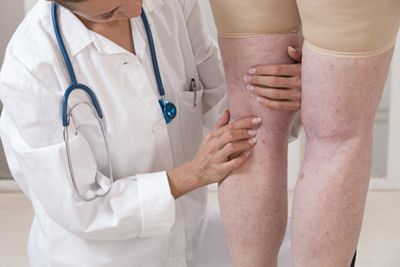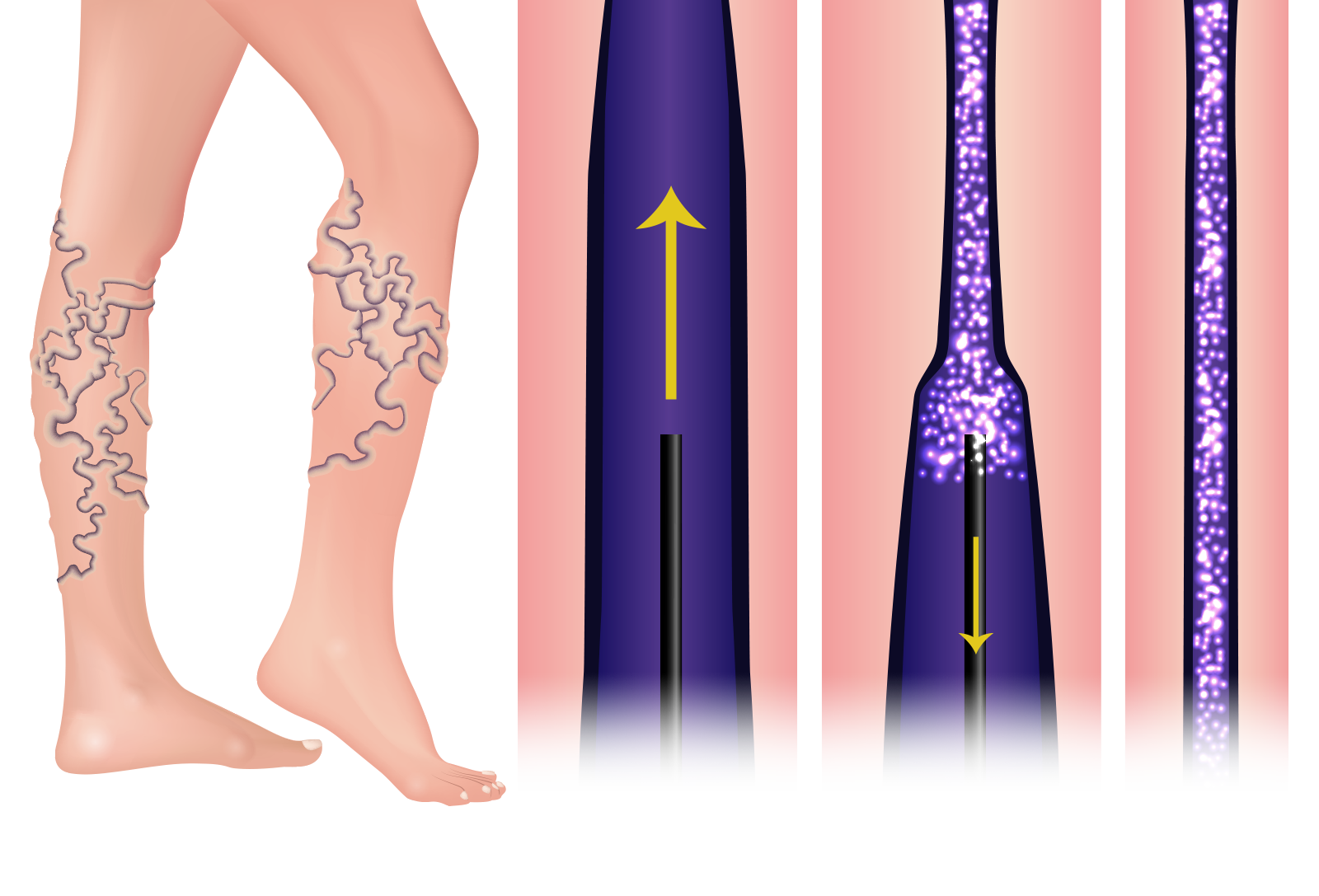
Spider Veins
Spider veins appear as small clusters of blood vessels just under the surface of the skin.
These veins are harmless, but they can make you feel embarrassed and frustrated with your appearance.
How do I know if I have spider veins?

Spider Veins Appear as Flat, Fine Lines
Smooth Texture
Unlike varicose veins, spider veins do not usually bulge or swell. And as their name implies, the veins are fine like a spider web.
Color Variations
Spider veins can range in color. Some may appear red while others are purplish or blue.
Sometimes Affecting the Face
Varicose veins tend to develop only on the legs. Spider veins can affect the legs and also the face.
Distinguishing Spider Veins from Varicose Veins Spider veins appear as thinner, flatter lines. They are generally less noticeable.
Older Women Typically Develop the Condition
In general, older women are more prone to developing spider veins. Hormonal changes resulting from pregnancy, birth control, and other causes can increase your risk.
Genetics and Lifestyle Factors Can Result in Spider Veins
Heredity
In addition to age, women with a family history of blood clots or spider veins are naturally predisposed to developing the condition.
Occupation, Clothing, and Sun Exposure
Sitting or standing for long periods and wearing overly tight clothing can lead to spider veins. So can sun exposure in women with light skin.
Venous Insufficiency
All of these causes can contribute to a condition known as venous insufficiency. This means that the valves that move blood through the vessels fail or leak. As a result, the blood will pool and create visible veins beneath the skin.
Thousands of People Seek Treatment Each Year
Screening Consists of a Visual Exam
Spider veins can be diagnosed with a simple visual examination. The doctor will also discuss your medical history, medications that could increase your risk such as birth control, and your family medical history.

Make a Healthy Lifestyle a Priority
Exercise & Diet
Excess weight can place strain on your veins, so commit to losing a few pounds if you need to. An added bonus: staying active naturally encourages good circulation.
Wear Sunscreen
If you have light skin, sun exposure can cause spider veins and make them worse, especially on your cheeks or nose. Make a habit of wearing full-spectrum, high-SPF sunscreen every day.
Elevate Your Legs
If you can, take short breaks every few hours to lift your legs higher than your heart. This is especially important if you stand throughout the day for work. Pillows offer a comfortable spot to rest your feet.
Wear Compression Stockings
Another tip for workers in the service industry, nurses, and others who need to stay on their feet is to wear lightweight compression stockings.
Sclerotherapy & Laser Treatment Are Trusted Solutions
“The gold standard of spider vein treatment is sclerotherapy. Laser [therapy] is a good option for the needle-phobic or on veins too small to inject.” Dr. Brian Zelickson, associate professor of dermatology at the University of Minnesota
What Exactly Is Sclerotherapy?
During sclerotherapy, the doctor directly injects highly concentrated saline or another type of solution into the vein. The needle may be guided by ultrasound for greater precision. The treatment causes the vein to collapse and break down. As the tissue is resorbed by the body, the appearance of the spider veins will eventually fade.
A Closer Look at Sclerotherapy
A Doctor Can Recommend the Best Solution
Spider veins are incredibly common, but they don’t have to rule your clothing options or make you reach for makeup every day. Schedule an appointment with a doctor today to learn more about available treatments.




